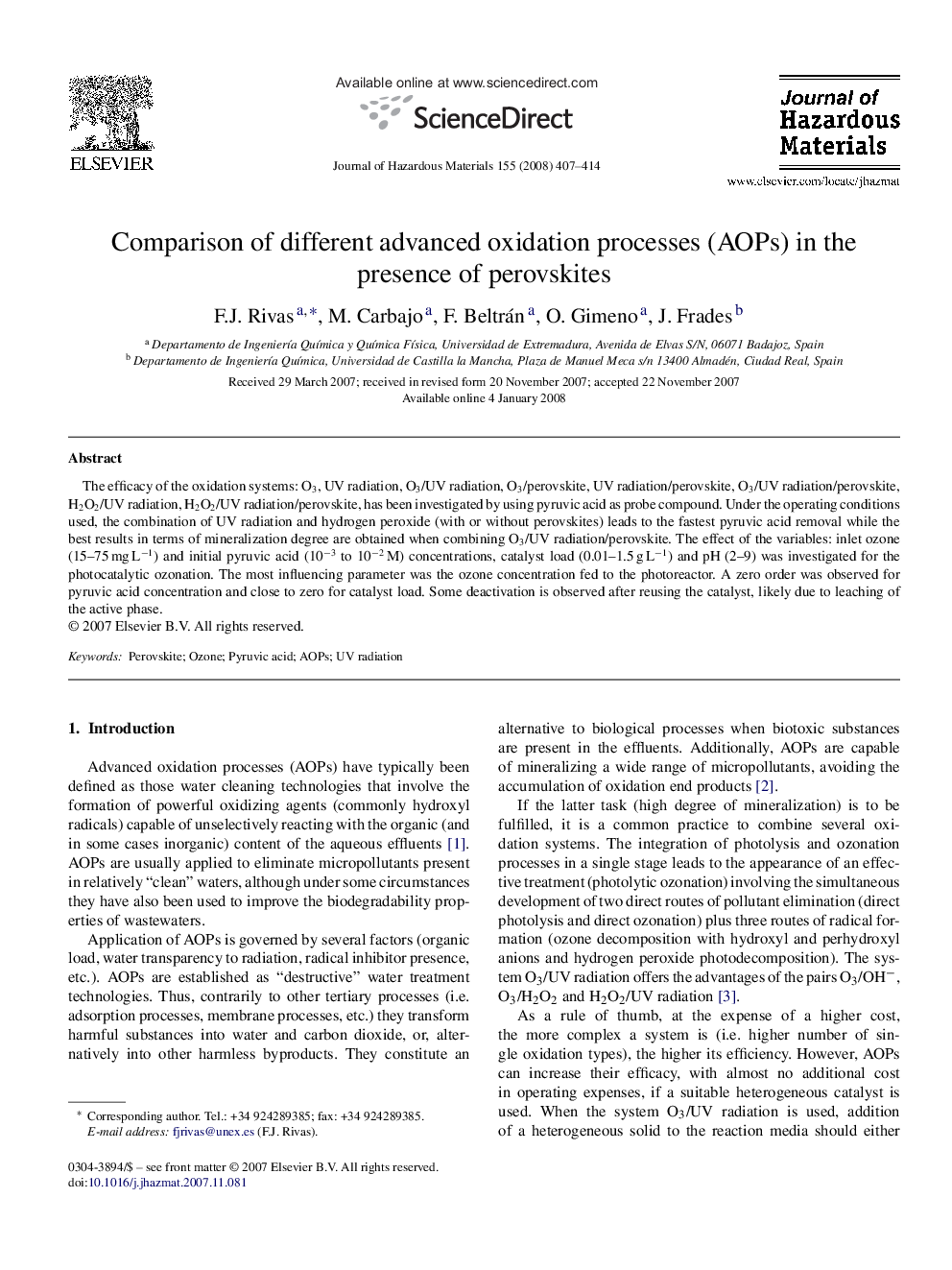| Article ID | Journal | Published Year | Pages | File Type |
|---|---|---|---|---|
| 583177 | Journal of Hazardous Materials | 2008 | 8 Pages |
Abstract
The efficacy of the oxidation systems: O3, UV radiation, O3/UV radiation, O3/perovskite, UV radiation/perovskite, O3/UV radiation/perovskite, H2O2/UV radiation, H2O2/UV radiation/perovskite, has been investigated by using pyruvic acid as probe compound. Under the operating conditions used, the combination of UV radiation and hydrogen peroxide (with or without perovskites) leads to the fastest pyruvic acid removal while the best results in terms of mineralization degree are obtained when combining O3/UV radiation/perovskite. The effect of the variables: inlet ozone (15-75 mg Lâ1) and initial pyruvic acid (10â3 to 10â2 M) concentrations, catalyst load (0.01-1.5 g Lâ1) and pH (2-9) was investigated for the photocatalytic ozonation. The most influencing parameter was the ozone concentration fed to the photoreactor. A zero order was observed for pyruvic acid concentration and close to zero for catalyst load. Some deactivation is observed after reusing the catalyst, likely due to leaching of the active phase.
Related Topics
Physical Sciences and Engineering
Chemical Engineering
Chemical Health and Safety
Authors
F.J. Rivas, M. Carbajo, F. Beltrán, O. Gimeno, J. Frades,
